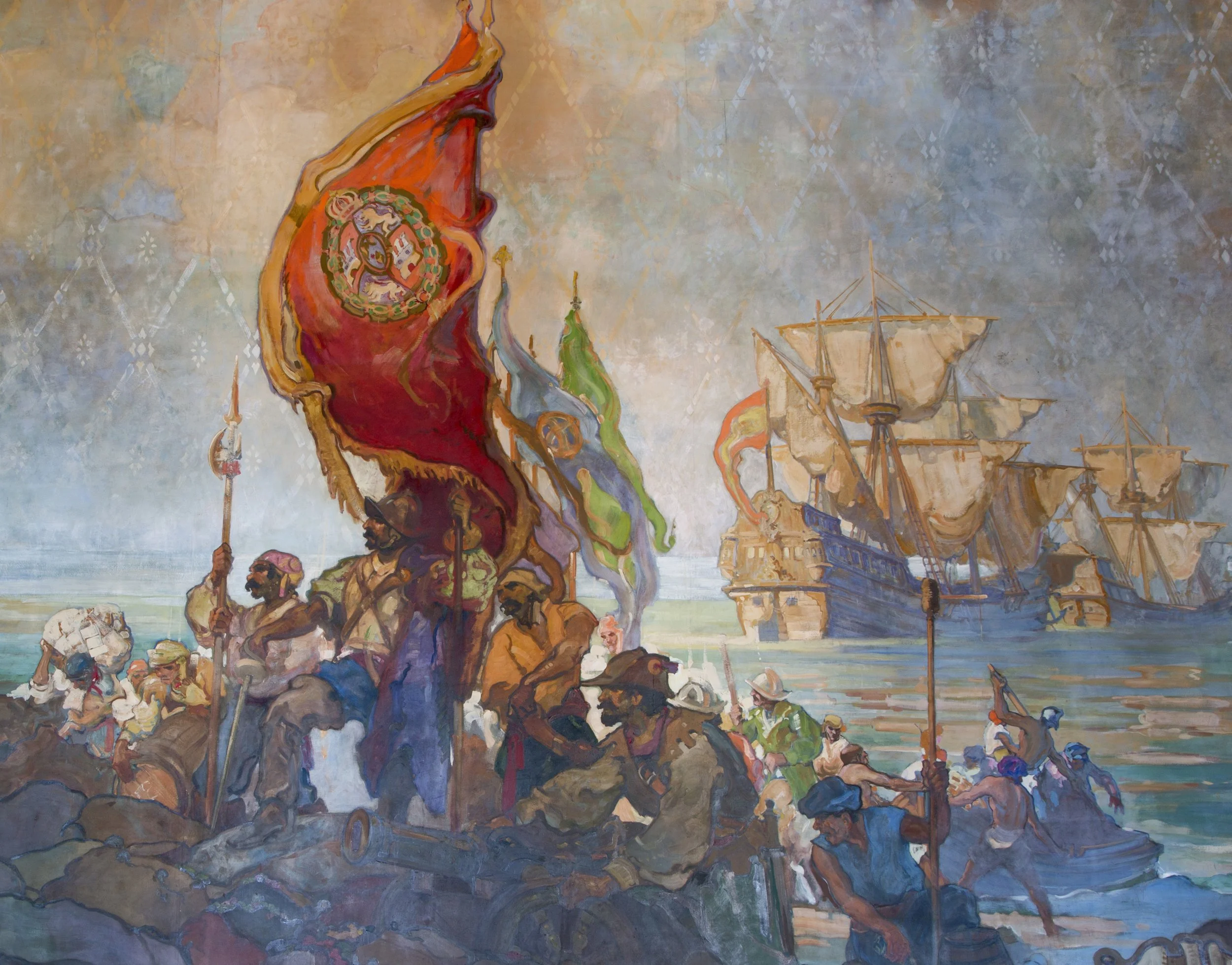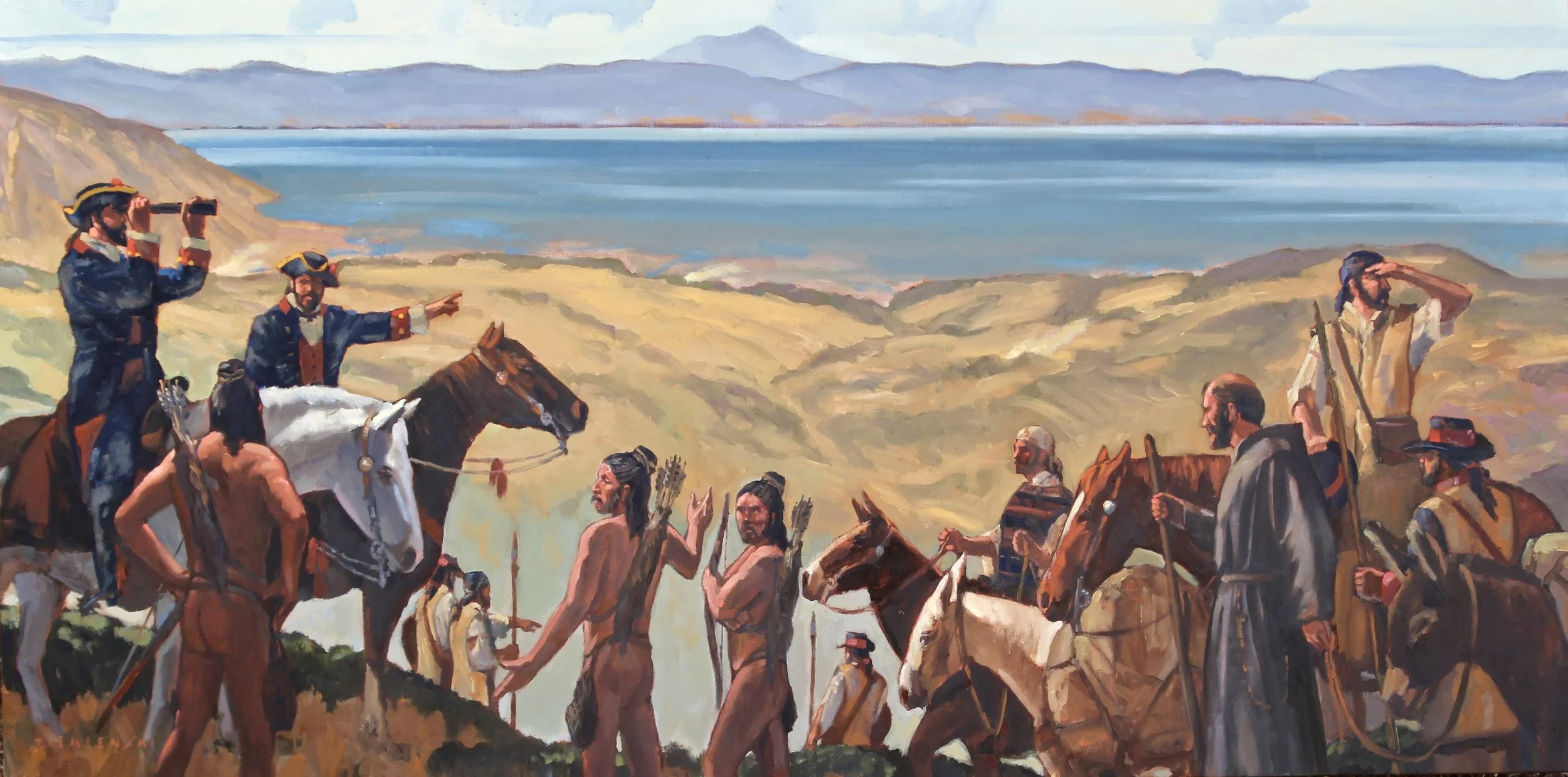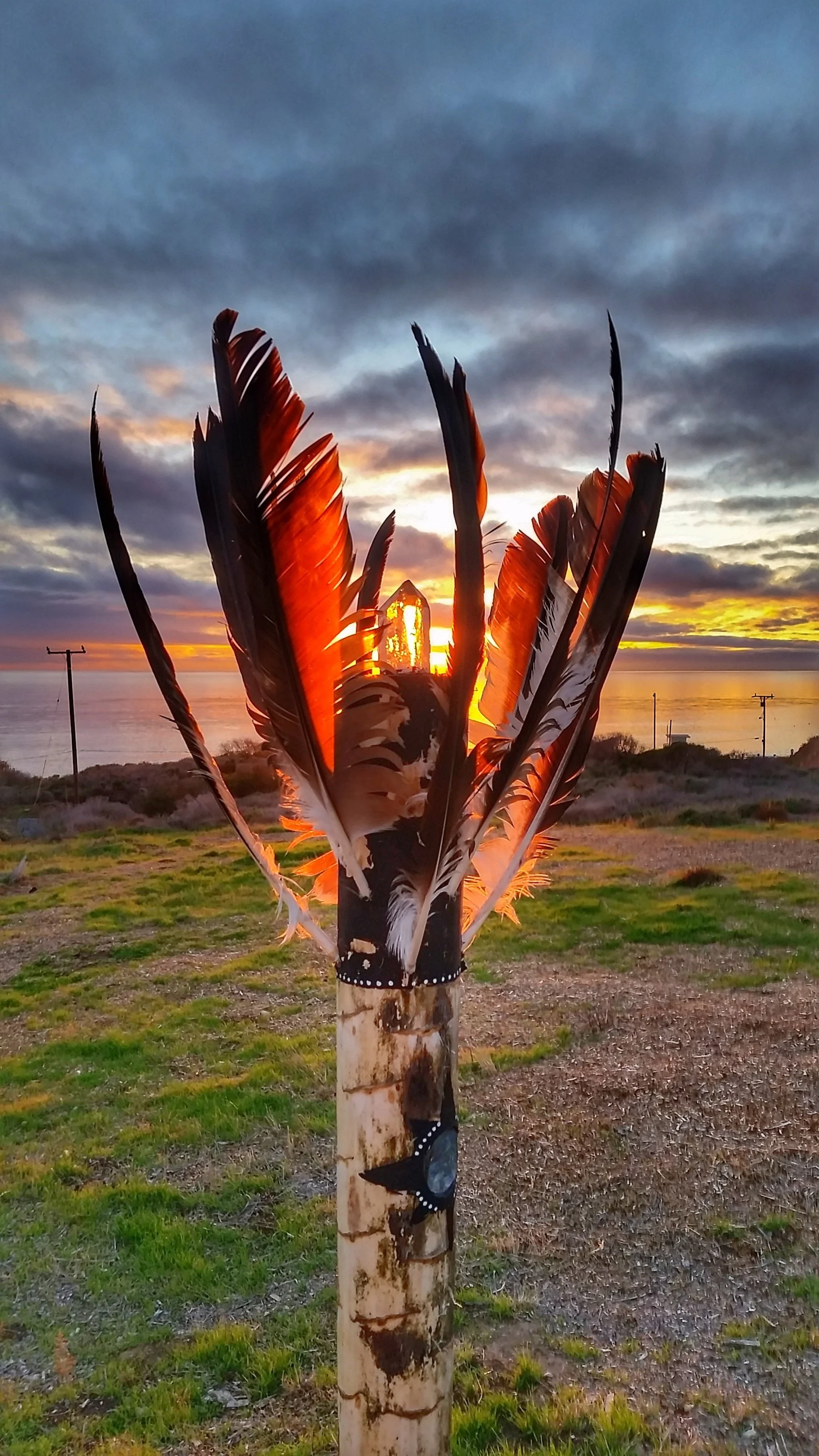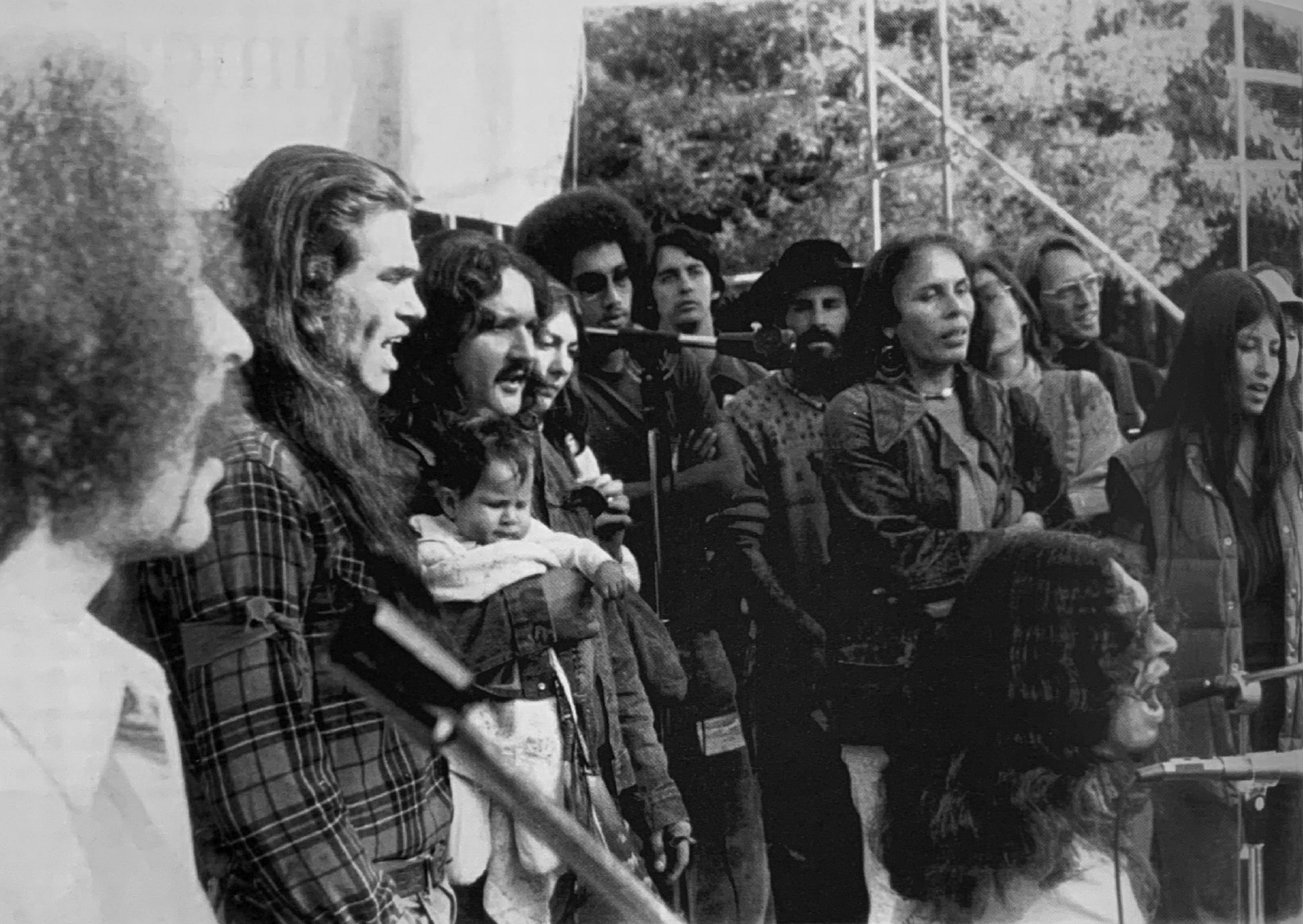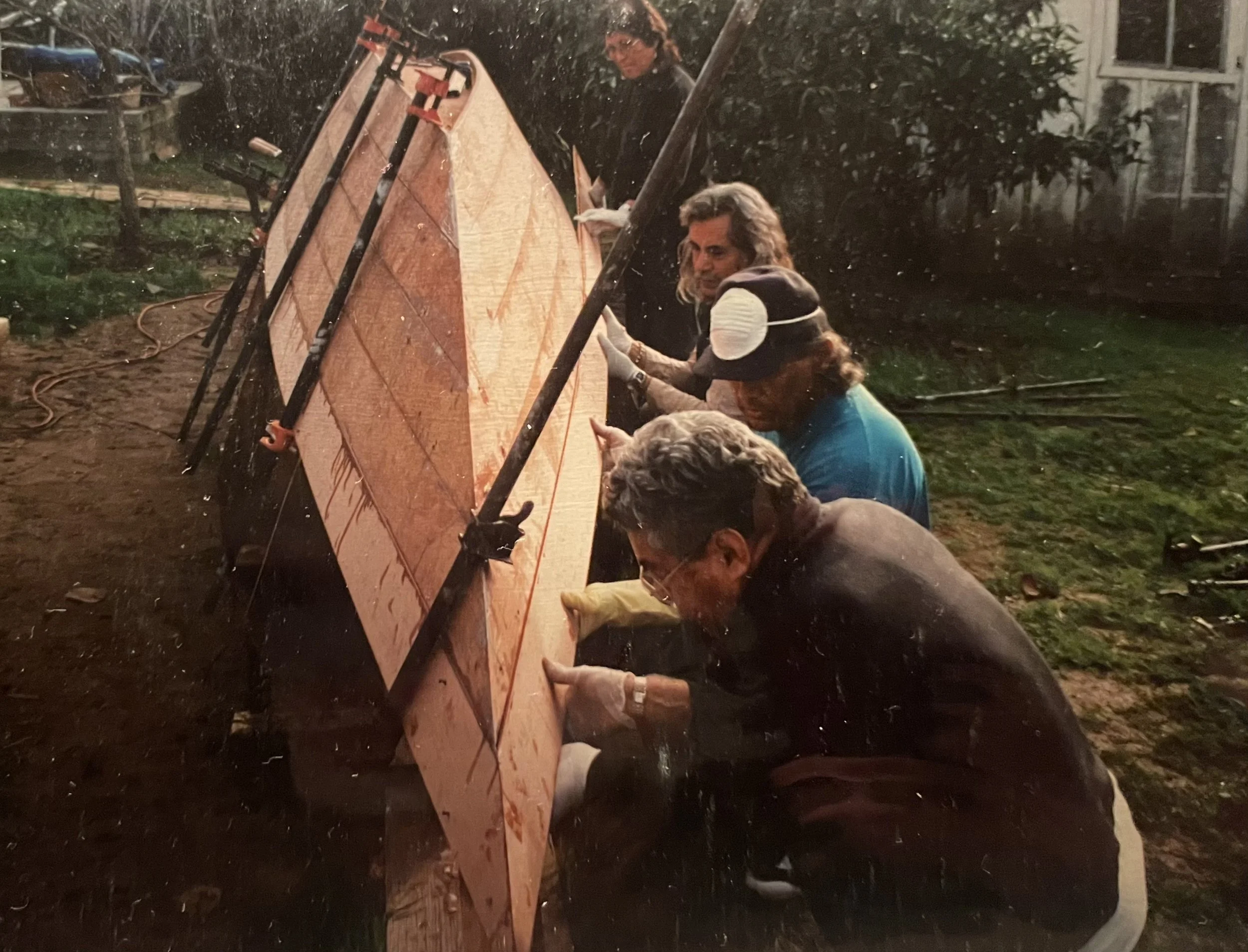A Timeline of Strength and Endurance
A timeline is more than a series of dates—it is the story of a people, their endurance, and their future. Our timeline does not begin with colonization, missionization, or displacement; those were moments of disruption, not our origin. We have always been here, living, governing, and thriving in relationship with our lands and waters. Though history attempted to reshape us, we continue—strong, sovereign, and deeply connected to our ancestors and future generations alike.
Astronomy
Thousands of years before most Europeans thought the earth was round, our ancestors develop a sophisticated understanding of the Earth's relationship to celestial bodies. This informs our navigation across vast waters, the timing of ceremonies, ecological cycles, governance systems, and community life. Our Chumash astronomical traditions reveal a deep legacy of Indigenous scientific knowledge—one rooted in observation, documentation, and interpretation—that flourished across the Americas and continues to inform Indigenous knowledge systems today.
Mathematics
Our ancestors create a complex mathematical systems rooted in a base-4 structure. They measure volume, length, and currency using sizes and proportions relative to the human body.
Agriculture
Long before the term exists, our culture practices regenerative agriculture. Through intentional care of the land—like pruning, selective harvesting, and stewarding interdependent plant communities such as oak groves (acorn) and blue dicks (root vegetable)—we support thriving ecosystems. Cultural burnings revitalizes landscapes, clears excess brush, and encourages the growth of vital food and basketry plants. These practices reflect a deep reciprocal relationship with the land, ensuring sustainability for generations to come.
Maritime Navigation
Chumash and Tongva nations navigate their massive plank canoes through the California waters, creating a robust trade system of bustling seaports. These tomol (Chumash) and tiat (Tongva) canoes transport people and goods along the California coast as far north as the present-day San Francisco and south to present-day Mexico. Today, Chumash people continue to paddle their tomols in these waters, keeping alive a history of ocean stewardship.
Language
With plank canoes, dugouts, and tule boats, Chumash people travel hundreds of miles along the coast and through inland waterways. These journeys allow for a constant exchange of ideas, languages, goods, and traditions with neighboring communities—both near and far. Trade routes become threads of connection, woven through kinship, marriage, and diplomacy. Multilingualism is the norm, with many people fluently speaking three to five languages, reflecting a richly interconnected world shaped by movement, relationship, and shared knowledge.
Haku! (Chumash)
Miyuu! (Tongva)
Hamiinat! (Tataviam)
Me-yaxh-wen! (Cahuilla)
1542Spain Comes to Chumash Lands
Spanish explorer, Juan Rodríguez Cabrillo, lands on the inhabited Chumash island of Tuqan. Cabrillo demonstrates Spanish imperial power by renaming the Chumash homeland of Tuqan as "La Posesión" (meaning "possession"). This isn’t just a physical claim to the land but a deliberate erasure of Chumash presence and sovereignty that has existed for millennia. Cabrillo enacts the first stage of colonial conquest—asserting ownership through language.
1579-1767Preparing for Colonization
European explorers like Drake, Portolà, Cermeño, and Vizcaíno lead ocean and land expeditions to map out California’s lands, resources, and peoples for colonization.
1786Spanish Mission at Syuxtun
Misión de Santa Bárbara is built at the village of Syuxtun by friar Junípero Serra. The soldiers and priests use Chumash people as slave labor to support the running of the Mission. Chumash life is radically changed by: life under slavery, sickness, cultural suppression, destruction of traditional governmental structures, environmental changes wrought by the Mission's livestock, and forced religious conversion (which included being given a Spanish name, a clear erasure of identity).
By 1804, five Missions are established in Chumash territories and Chumash populations rapidly decrease from new diseases and conditions under slavery.
Late 1700's-Early 1800'sRussian Seal Hunters Arrive
Russian fur traders, driven by the demand for sea otter pelts in the Chinese market, arrive on the Channel Islands. In their aggressive pursuit of these valuable resources, they forcibly claim the seal hunting territories that have long been occupied by the Tongva and Chumash peoples. The traders instigate violent conflicts, commit atrocities, and contribute to the rapid decline of the Chumash on the northern Channel Islands and the Tongva on the southern Channel Islands.
1824The Chumash Revolt
The Chumash Revolt of 1824 marks a pivotal moment of Indigenous resistance against Spanish colonial rule in California and stands as one of the most organized Indigenous resistance movements in California's colonial history. After decades of forced labor, cultural suppression, and mistreatment at the missions, the Chumash people launch a coordinated uprising that begins at Mission Santa Inés and quickly spreads to Mission Santa Barbara and Mission La Purísima. The rebels fight for their freedom and cultural survival. Though eventually suppressed by Spanish military forces, the revolt demonstrates the Chumash people's resilience and determination to preserve their identity despite overwhelming odds.
1834The Decline of the Brotherhood-of-the-Tomol
As the cultural foundation of the Chumash people continues crumbling under colonization, the Brotherhood-of-the-Tomol—an ancient organization tasked with maintaining crucial knowledge of building and navigating tomols—is disappearing as well.
One day, Palatino Saqt'ele and his men took the last two tomol to the sea to go fishing. Disaster struck and a storm sank one tomol and crashed the other, killing many of the men. Palatino called the Brotherhood-of-the-Tomol together in ceremony with much sadness and said:
“I say to you now that I cannot fulfill my obligations to the Brotherhood. Now is the end, for there is no one else who will build a tomol. They are all dead–those brave men who navigated the sea. I say clearly that the time has come when the tomol Brotherhood has ended.”
1839 – 1915Passing Knowledge Down
Fernando Librado Kitsepawit, Ventura Chumash culture bearer of Island Chumash descent, makes it his life’s work to search out Chumash people in the Ventura and Santa Barbara area and collect (orally) disappearing pieces of cultural knowledge for future Chumash communities.
Through these tumultuous times, Chumash families continue to pass cultural knowledge down within their communities and families.
1845Indian Agent Thomas Hope steals Chumash Lands in Santa Barbara
Thomas Hope, a rancher who bought up property around the "Cieneguita Reservation"—where our Chumash community lived and had property rights since the Mission disbanded 24 years prior—is appointed the Indian Agent by the California Superintendent for Indian Affairs. Hope eventually burns out the inhabitants homes and takes the land for himself. This land is renamed Hope Ranch and today is home to celebrities and foreign dignitaries.
1848-1855The California Gold Rush
Gold is discovered and 300,000 gold hunters from every continent pour into California hoping to get rich. California Indian populations crash as disputes over land, legalized bounty on Indians, and disease take their toll.
1850-1870Governor of California Signs a New Act Legalizing the Enslavement of California Native People
Native Californians, including Chumash, were sold in auctions in Los Angeles—thanks to a state law nefariously called the Act for the Government and Protection of Indians.
Excerpt: “Any person having or herafter obtaining a minor Indian, male or female, from the parents or relations of such Indian minor, and wishing to keep it, such person shall go before a Justice of the Peace in his Township...”
1892Native Children are Forced into Indian Boarding Schools
Perris Indian School (later renamed Sherman Institute) was the first of three Indian Boarding Schools opened in California, and children from across the state—including Chumash—are taken from their families and forced to attend.
1912-1913Recording Language & Culture
Anthropologist J.P. Harrington works with various Chumash from Santa Barbara, Santa Ynez, and Ventura to record basketry, knowledge, stories, and memories, including accounts of Chumash experiences during the missions, stories of resistance against mission authority, and information on the Brotherhood-of-the-Tomol. Harrington’s work provides valuable records of language and culture for later Chumash descendants to begin the long road to cultural recovery.
1914-1918, 1939-1945Native Americans Fight for their Country
Despite not gaining American citizenship until 1924, Native people—including Chumash—fight alongside other Americans in WW1 and WW2. This begins a longstanding tradition in Native culture. Today, Native Americans have the highest record of service per capita in our nation.
1950's-1970'sCommunity Activism
Without laws to protect sacred sites, Chumash communities do what they can to save their cultural landscape. Elder John Ruiz recalls being pulled from high school by his aunt Francis to lay down in front of bulldozers at Hammond’s Meadow (Shalawa) to protect the burials there.
1968American Indian Movement
The American Indian Movement (AIM), founded in 1968 in Minneapolis, plays a major role in empowering Native communities and pushing for Indigenous rights. Coastal Band finds new strength and allies during this movement and join protests at the Occupation of Alcatrez (1969-71) and the Wounded Knee Occupation (1973).
1976Coastal Band Plays a Key Role in Cultural Resource Protection
Coastal Band conceives of and helps create the California Native American Heritage Commission—protecting Native American cultural resources for the preservation of sacred sites and burial grounds and ensure Native Americans access to these places.
Coastal Band:
- Coastal Band member John Sespi is elected to a Commissioner seat on the California Native Heritage Commission board. He serves 12 years.
- Coastal Band leadership creates the first guidelines for Cultural Resources Management in California with the goal of protecting cultural sites. They go on to train other tribes in California.
1978American Indian Freedom of Religion Act
This act protects and preserves the religious freedom of Native Americans, ensuring access to sacred sites, the use and possession of sacred objects, and the freedom to worship through traditional ceremonies. The Act also directed federal agencies to review and modify their policies to protect Native American religious and cultural rights. For the first time since before the Mission era, Chumash people are free to practice their culture and ceremonies.
1976The Rebirth of the Brotherhood-of-the-Tomol and the Helek
Coast Band men revived the Brotherhood and built the first modern tomol as a result of a joint venture between the Quabajai Chumash of the Coastal Band of the Chumash Nation, Peter Howorth, and the Santa Barbara Museum of Natural History. This tomol was named Helek (peregrine falcon). Her crew navigated the rough waters around the Santa Barbara Channel Islands on a historic eleven day journey. These new members of the Brotherhood-of-the-Tomol have our community’s deepest respect, and are honored to this day.
1978-1979Defending Point Conception: The Chumash Western Gate
Chumash tribes along with Native allies from across the nation occupy Point Conception (Humqaq), a sacred coastal site north of Santa Barbara—where the dead pass into the afterlife. This 9-month occupation successfully blocks the development of a liquefied natural gas plant there.
1970's-1990'sA Time of Collaboration
Chumash tribes create partnerships with newly-formed environmental protection organizations like the California Coastal Commission as well as with established state organizations like U.S. Fish and Wildlife Service and the California Department of Fish and Wildlife. A new era emerges, where Chumash people now have allies in their fight to protect the well-being of their lands and waters, and the sovereignty of their people and culture. Sacred sites, cultural sites, and burials are saved at places like Rincon Pt., Goleta, Carpinteria, Las Cruces, Los Carneros, Bacara, and the Santa Barbara County Jail.
1997'Elye’wun: A Commmunity Tomol is Born
The ’Elye’wun was the first tomol to be owned by the Chumash community in over 100 years. She was funded under various grants, housed by the Chumash Maritime Association, and built by Chumash leaders, community, and artists who donated nine months of their time to craft the ’Elye’wun.
september 1, 2001Coming Home: A Journey to Limuw
The ’Elye’wun left Channel Islands Harbor on Saturday, September 8 at 3:45am. She traveled first to ’Anyapax (Anacapa Island) and then continued to the east end of Limuw (Santa Cruz Island) where she was welcomed home with ceremony by more than 125 members of the Chumash community encamped at Swaxil (Scorpion Ranch).
Since then, the Crossing to Limuw has become an annual homecoming for our Chumash community.
2006A Historic Legal Milestone: Deborah Sanchez
Deborah Sanchez is sworn in as a Superior Court judge for the city of Los Angeles. She is Chumash, and the first female Native American to hold this office in Los Angeles.
2008Reviving the Threads: Tima Link
Tima Link (Coastal Band) begins the vital work of revitalizing Chumash basket weaving traditions for her tribe. What starts as a personal journey grows into a community movement—one that reconnects generations through the art of traditional textiles.
2009U.S. Congress Apologizes to All Native Americans
“The United States, acting through Congress…recognizes that there have been years of official depredations, ill-conceived policies, and the breaking of covenants by the Federal Government regarding Indian tribes.”
2020Racial Justice Rises to Bring Down Symbols of Colonization
Statues of historical figures, particularly those associated with European colonialism and the oppression of Native Americans, were removed or vandalized during protests related to the Black Lives Matter movement and other racial justice issues. Prominent examples included statues of Christopher Columbus, Junípero Serra, and John Sutter, Juan de Oñate, and Kit Carson.
2024A Historic Apology
President Joe Biden issues a historic apology for the U.S. government’s role in creating and perpetuating the federal Indian boarding school system.


